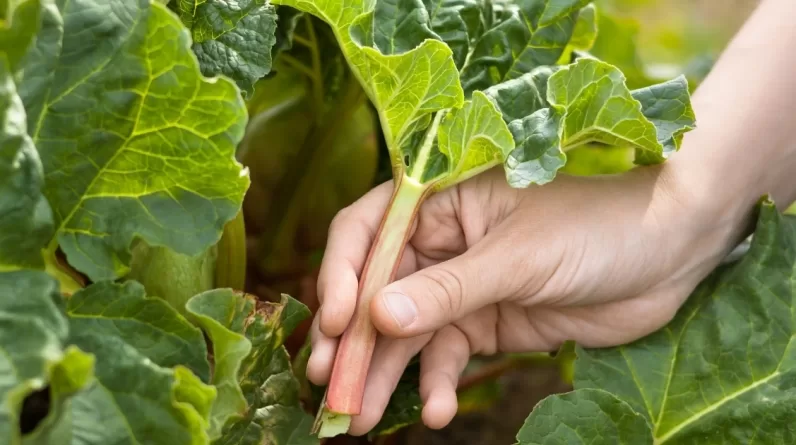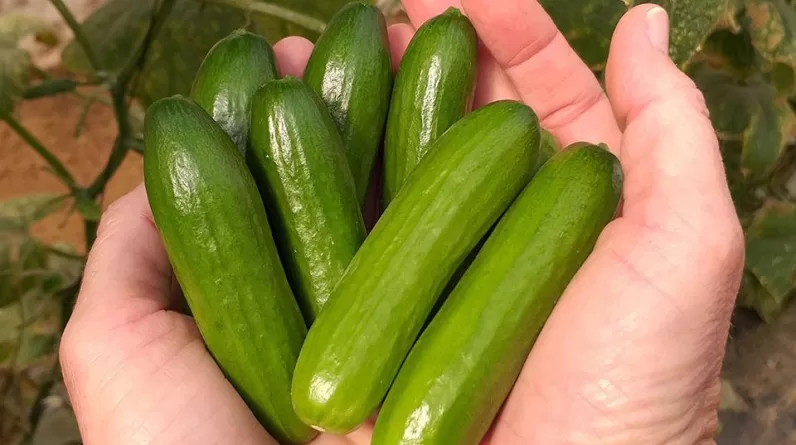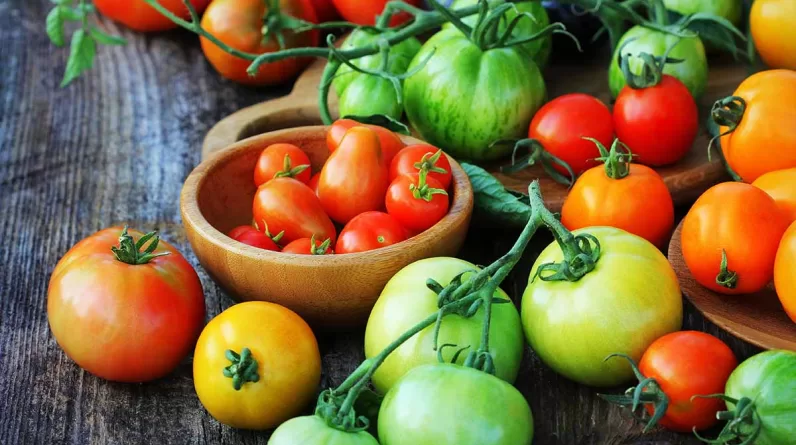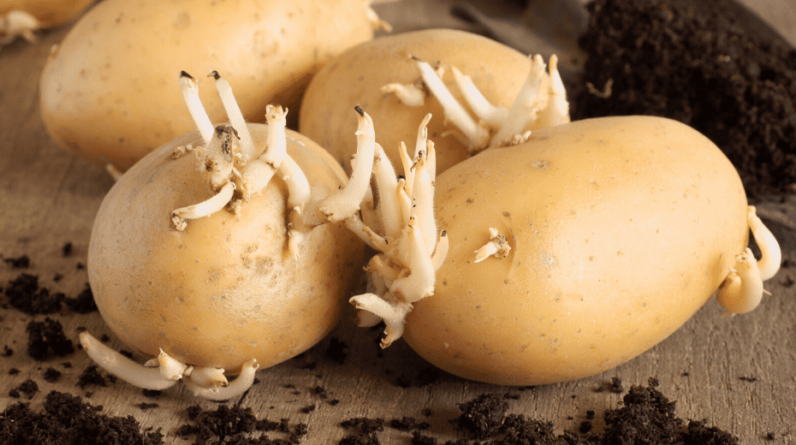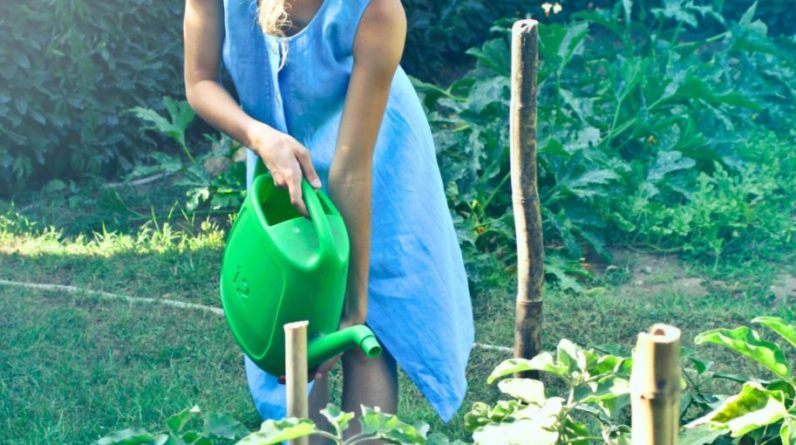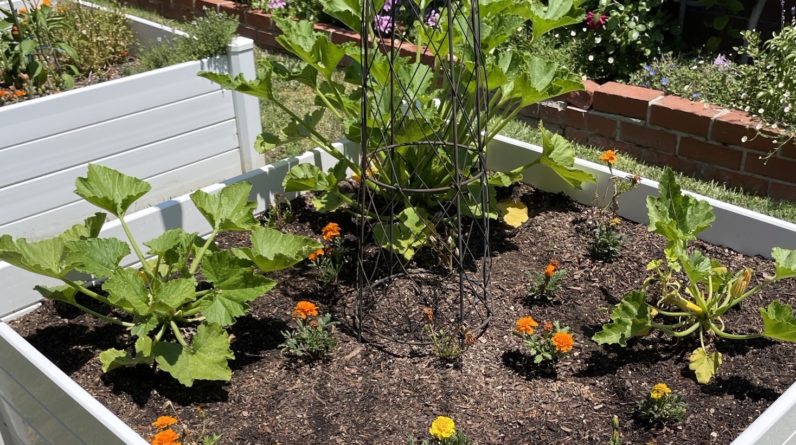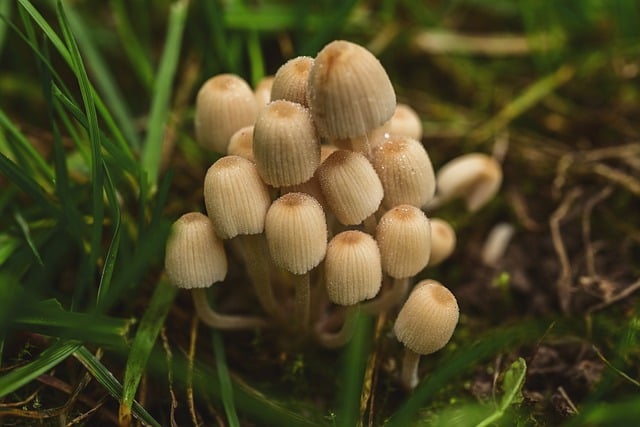
If you’re an avid gardener, you know that mushrooms can be a common sight in your vegetable garden. While some mushrooms are harmless and even beneficial to your garden’s ecosystem, others can be toxic and pose a risk to your health and the health of your plants. In this article, we’ll explore how to identify harmful mushrooms, how to safely get rid of them, and how to prevent future growth.
Understanding Mushrooms in Your Garden Mushrooms are a type of fungus that feed on decaying organic matter in the soil. They play an important role in breaking down dead plant material and recycling nutrients back into the soil. While most mushrooms are harmless, some can be toxic and pose a risk to your health and the health of your plants. It’s important to be able to identify harmful mushrooms and take steps to remove them from your garden.
Key Takeaways
- Some mushrooms are beneficial to your garden’s ecosystem, while others can be toxic and pose a risk to your health and the health of your plants.
- Mushrooms feed on decaying organic matter in the soil and play an important role in breaking down dead plant material and recycling nutrients back into the soil.
- To get rid of harmful mushrooms, it’s important to be able to identify them and take steps to safely remove them from your garden.
Understanding Mushrooms in Your Garden
If you have noticed mushrooms growing in your vegetable garden, it is essential to understand what they are and how they function. Mushrooms are a type of fungi that reproduce through spores. There are thousands of mushroom species, and they come in different shapes, sizes, and colors.
Mushrooms have a unique structure, consisting of a fruiting body and mycelium. The fruiting body is the visible part of the mushroom, while the mycelium is the underground network of thread-like structures that absorb nutrients from the soil.
Mushrooms play an important role in the ecosystem, as they are decomposers that break down complex organic matter. They form a symbiotic relationship with plants, where they exchange nutrients and water for carbohydrates produced by the plant through photosynthesis.
It is important to note that not all mushrooms are harmful to your vegetable garden. Some species are even beneficial, as they help improve soil quality and prevent soil erosion. However, some types of mushrooms can be harmful to your plants, and it is essential to identify and remove them promptly.
To prevent mushrooms from growing in your vegetable garden, ensure that you do not overwater your plants, as mushrooms thrive in damp environments. Additionally, remove any dead or decaying plant matter promptly, as this is a common breeding ground for mushrooms.
In conclusion, understanding the basics of mushrooms in your garden is important in maintaining a healthy and thriving vegetable garden. By identifying and removing harmful mushrooms, you can prevent them from spreading and damaging your plants.
Why Mushrooms Appear in Your Vegetable Garden
Mushrooms are a common sight in vegetable gardens, and while they may look harmless, they can actually be a sign of underlying issues in your garden. Here are a few reasons why mushrooms may be appearing in your vegetable garden:
Soil Conditions
Mushrooms thrive in soil that is rich in organic matter and has a high moisture content. If your garden soil has a lot of decomposing organic matter, such as compost, mulch, or wood chips, it can create a perfect environment for mushrooms to grow.
Water and Moisture
Mushrooms require moisture to grow, and they can appear in areas that are consistently damp or humid. Excess water and poor drainage can also create the perfect conditions for mushroom growth.
Organic Matter
As mentioned earlier, mushrooms thrive in soil that is rich in organic matter. If you have recently added compost or mulch to your garden, it may be contributing to the mushroom growth.
Tree Stumps and Sawdust
If you have recently removed a tree or had some tree work done, the resulting sawdust or remaining tree stump can contribute to mushroom growth in your garden.
Nitrogen Fertilizer
Overuse of nitrogen fertilizer can also contribute to mushroom growth in your garden. While nitrogen is an essential nutrient for plant growth, too much of it can create an environment that is conducive to mushroom growth.
Overall, mushrooms are not necessarily harmful to your vegetable garden, but they can be an indicator of underlying issues with your soil or moisture levels. By identifying the root cause of the mushroom growth, you can take steps to address the issue and prevent future growth.
The Impact of Mushrooms on Your Garden
Mushrooms are a common sight in many gardens, including vegetable gardens. While they may look harmless, they can have a significant impact on your plants and crops.
Plants in your vegetable garden can be affected by mushrooms in several ways. Some mushrooms are parasitic and can attach themselves to the roots of your plants, causing distress signals that can stunt their growth or even kill them. Other mushrooms can release toxins that can ruin your crops, making them inedible or unsafe to consume.
However, not all mushrooms are harmful to your garden. In fact, some mushrooms can be beneficial. They can help break down organic matter in the soil, making nutrients more available to your plants. They can also help control pests and diseases, acting as a natural form of pest control.
It is crucial to identify the types of mushrooms growing in your garden to determine whether they are harmful or beneficial. If you notice any mushrooms that are causing damage to your plants or crops, it is best to remove them promptly. You can do this by pulling them out by hand or using a garden tool to cut them at the base.
In conclusion, mushrooms can have both positive and negative impacts on your vegetable garden. It is essential to monitor their growth and take action if necessary to ensure the health and productivity of your plants and crops.

Identifying Harmful Mushrooms
When it comes to identifying harmful mushrooms in your vegetable garden, it’s important to be cautious and knowledgeable. While many mushrooms are harmless, some can be toxic or even deadly if ingested. Here are some tips to help you identify harmful mushrooms:
- Look for mushrooms with white gills. Many poisonous mushrooms have white gills, while most edible mushrooms have pink or brown gills.
- Check the cap of the mushroom. Poisonous mushrooms often have a cap that is slimy or sticky to the touch.
- Pay attention to the shape of the mushroom. Amanita mushrooms, which include the deadly death cap and the poisonous amanita phalloides, have a distinctive bulbous base.
- Be wary of small mushrooms. The deadly conocybe filaris and galerina marginata are both small, brown mushrooms that can be easily mistaken for harmless varieties.
If you’re unsure about the safety of a mushroom, it’s best to err on the side of caution and avoid consuming it. Remember, even a small amount of some toxic mushrooms can cause serious harm or even death.
How to Get Rid of Mushrooms
If you have mushrooms growing in your vegetable garden, it’s important to get rid of them as soon as possible. Mushrooms can compete with your plants for nutrients and water, and some varieties can even be poisonous. Here are some ways to remove mushrooms from your garden:
- Remove the Mushrooms: The first step is to remove the mushrooms by hand. Be sure to wear gloves to protect your hands. You can also use a small trowel to dig up the mushrooms and their roots. Dispose of the mushrooms in a sealed bag or container.
- Use Fungicides: If you have a severe mushroom problem, you may need to use a fungicide. Look for a fungicide that is safe for use in vegetable gardens. Follow the instructions on the label carefully.
- Use Vinegar: White vinegar contains acetic acid, which can kill mushrooms. Mix one part vinegar with four parts water and spray the solution on the mushrooms. Be careful not to spray the solution on your plants, as it can damage them.
- Use Baking Soda: Baking soda can also be used to kill mushrooms. Mix one tablespoon of baking soda with one gallon of water and spray the solution on the mushrooms.
- Use Soap and Water: Mix one tablespoon of dish soap with one gallon of water and spray the solution on the mushrooms. The soap will help to break down the mushrooms’ cell walls, killing them.
- Use Copper Sulfate: Copper sulfate is a fungicide that can be used to kill mushrooms. Follow the instructions on the label carefully.
- Use Bordeaux Mixture: Bordeaux mixture is a fungicide that is made from copper sulfate and lime. Mix one pound of copper sulfate with one pound of lime and add it to 10 gallons of water. Spray the solution on the mushrooms.
By following these steps, you can get rid of mushrooms in your vegetable garden and keep your plants healthy.
Preventing Future Mushroom Growth
To prevent future mushroom growth in your vegetable garden, there are a few things you can do.
Improve Drainage
Mushrooms thrive in moist environments, so improving drainage in your garden can help prevent their growth. You can do this by adding organic matter to the soil, such as compost or aged manure, which can improve soil structure and drainage. Additionally, avoid overwatering your plants and ensure that your garden has proper drainage.
Aerate Your Soil
Aerating your soil can also help prevent mushroom growth. This can be done with an aerator, which creates small holes in the soil to allow air and water to penetrate deeper into the soil. This can help to break down organic matter and improve drainage, which can discourage mushroom growth.
Dethatch Your Lawn
If you have a lawn near your vegetable garden, it’s important to keep it healthy and well-maintained. Thatch buildup can create a moist environment that is conducive to mushroom growth. Dethatching your lawn can help prevent this buildup and improve air circulation, which can also discourage mushroom growth in your garden.
Monitor pH Levels
Mushrooms tend to thrive in alkaline soil, so monitoring and adjusting your garden’s pH level can help prevent their growth. You can test your soil’s pH level with a soil test kit and adjust it as necessary with lime or sulfur.
Use Well-Drained Soil
Mushrooms also prefer poorly drained soil, so using well-drained soil in your garden can help prevent their growth. If your garden has heavy clay soil, consider using raised garden beds or adding organic matter to improve drainage.
By following these tips, you can help prevent future mushroom growth in your vegetable garden and enjoy a healthy, thriving garden.
Safe Practices Around Mushrooms
When dealing with mushrooms in your vegetable garden, it’s important to practice safe habits to prevent any harm to yourself, pets, or other plants. Here are a few tips to keep in mind:
- Wear gloves and protective clothing when handling mushrooms to avoid skin irritation or allergic reactions.
- Keep pets and other animals away from the mushrooms and any contaminated soil. Some mushrooms can be toxic to animals if ingested.
- Avoid consuming any mushrooms from your garden unless you are 100% certain of their identity. Mistaking a poisonous mushroom for an edible one can have serious consequences.
- Do not attempt to remove mushrooms by pulling them out of the ground, as this can spread their spores and cause them to grow back more quickly. Instead, use a trowel to carefully dig them up and dispose of them in a sealed plastic bag.
- If you have mushrooms growing in your lawn, avoid mowing over them as this can also spread their spores. Instead, use a rake or leaf blower to remove them.
- If you have potted plants in your garden, make sure to use fresh potting soil when replanting to avoid any contamination from mushroom spores.
- If you notice mushrooms growing indoors, it’s important to remove them immediately and dispose of them in a sealed plastic bag. This will prevent any spores from spreading and potentially causing harm to you or your pets.
By following these safe practices, you can effectively manage mushrooms in your vegetable garden without putting yourself, your pets, or other plants at risk.
Understanding the Role of Mushrooms in the Ecosystem
Mushrooms are a natural part of the ecosystem and play an important role in breaking down organic matter. They are the fruiting bodies of fungi, which are decomposers that feed on dead or decaying plant material and help to recycle nutrients back into the soil.
In addition to breaking down organic matter, mushrooms also form symbiotic relationships with plants. Certain types of fungi form mycorrhizal associations with plant roots, which help the plants to absorb nutrients and water from the soil.
While mushrooms are generally beneficial to the ecosystem, they can become a problem when they start growing in unwanted areas, such as in your vegetable garden. This can be due to the presence of excess moisture, decaying organic matter, or other factors that create a favorable environment for mushroom growth.
It is important to note that not all mushrooms are harmful to your garden. In fact, some wild mushrooms can even be beneficial by helping to break down organic matter and improve soil health. However, it is important to be cautious when dealing with wild mushrooms, as some species can be toxic and pose a risk to human and animal health.
To effectively manage mushrooms in your vegetable garden, it is important to understand their role in the ecosystem and take appropriate measures to prevent their growth in unwanted areas. This may include removing decaying organic matter, improving drainage, and using fungicides or other control methods as necessary.
Conclusion
In conclusion, getting rid of mushrooms in your vegetable garden can be a challenging task, but it is not impossible. With the right guide, effective methods, and healthy soil, you can eliminate mushrooms and prevent them from growing back.
To ensure that your vegetable garden remains free of mushrooms, it is crucial to maintain healthy soil. This means providing your plants with adequate nutrients and ensuring that the soil is well-draining. Additionally, it is essential to avoid overwatering your plants as this can lead to the growth of mushrooms.
When it comes to getting rid of mushrooms, there are several effective methods you can use. These include removing the mushrooms by hand, applying fungicides, and adjusting your watering habits. However, it is important to note that some of these methods may not be suitable for all types of mushrooms.
Ultimately, the key to getting rid of mushrooms in your vegetable garden is to be vigilant and take action as soon as you notice them. With the right knowledge and tools, you can keep your garden healthy and free from unwanted mushrooms.

